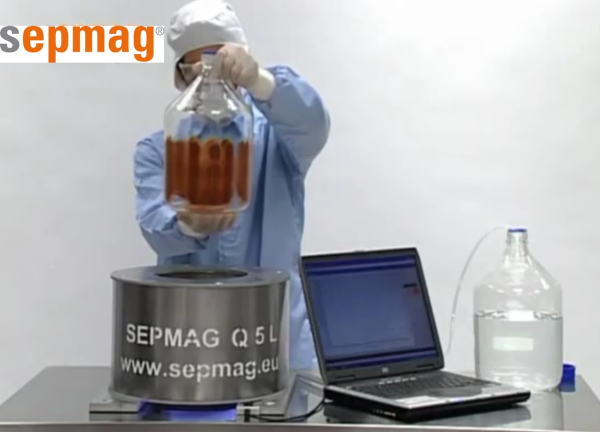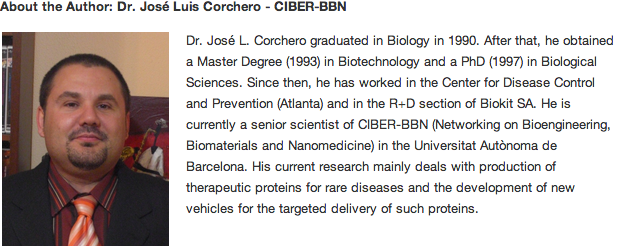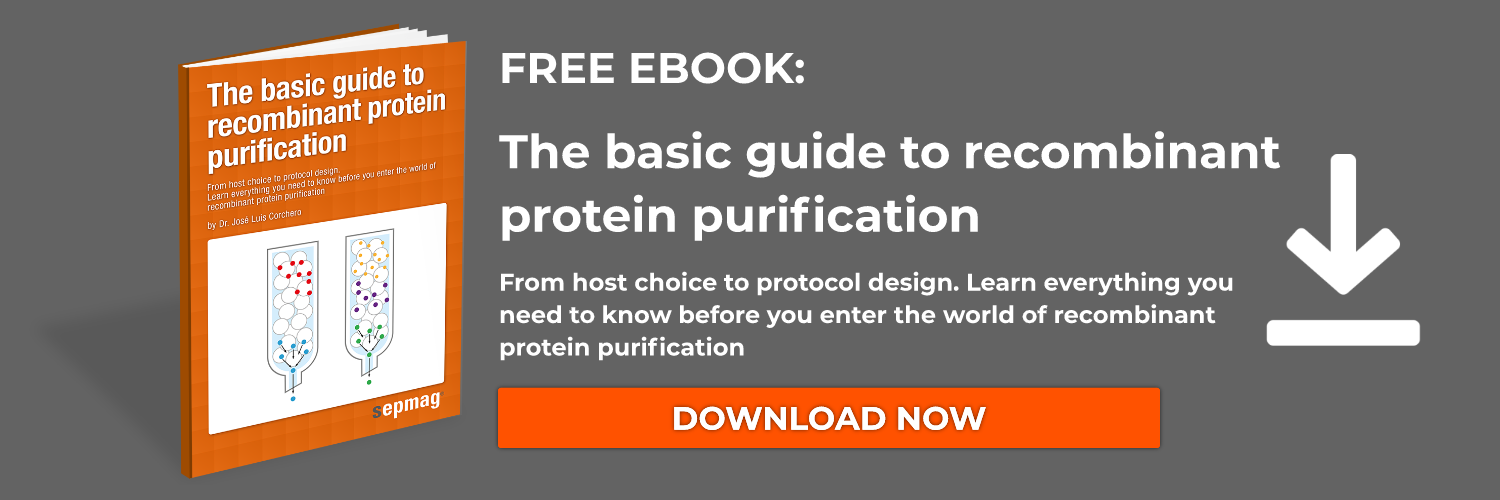In purification of recombinant proteins, highly pure samples are rarely obtained with the initial stages of the process. Whether we perform a highly specific affinity chromatography (with histidine tags, for example) or purification with several stages of capture and intermediate purification, there are always contaminants in the final sample. As you will find in our protein purification handbook, these contaminants are molecules that are closely related to the protein to be purified since, if a high-resolution technique is not applied, they can be hardly differentiated from the protein to be purified.

This post is an excerpt from our protein purification handbook, which explains the basics of recombinant protein purification. Download The Basic Guide to Recombinant Protein Purification here:
What happens when we need extreme purity?
When working with proteins for terapeutic purposes, the acceptable level of purity is more restrictive; therefore, the purification needs to be highly optimized and the present contaminants reduced to a minimum. With this purpose, and after the initial purification stages, a final stage called polishing can be incorporated. Although it can overlap with the previous stages, and it can even apply the same techniques, the purpose of polishing is to obtain the desired final purity.
As is clear, one of the vital characteristics of this stage is the resolution. In the previous steps, the majority of the contaminants were eliminated, which normally are formed by molecules with very different properties from the protein to be purified. Thus, only traces of protein impurity and other undesired substances will be left, such as endotoxins, nucleic acids or viruses. Additionally, it is possible to find structural variants of the protein itself, which also need to be eliminated in order to achieve the highest purity.
Therefore, the election technique should be able to discriminate the recombinant protein and the rest of the molecules with which it shares many properties, but are not needed in the final extract. This is achieved through a technique of high resolution, especially with gel filtration. Good recovery is also very important in polishing, since as the purification advances the loss of molecules of the protein of interest becomes more costly.
Wrap up
To sum up, we can see that polishing is an optional but very important stage for the most demanding purification processes. It allows us to obtain high purity in the final extract, and at the same time recover the purified product in a buffer adequate for its later use. The elimination of tags and other elements used in chromatography (but without any use in the purified product) are also included in this stage, deeply contributing to the procurement of the desired level of purity.
Did you find this post interesting? You can check this related post in order to learn more about protein purification:





